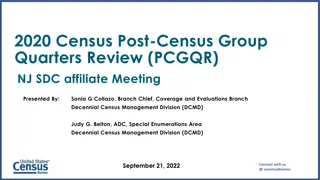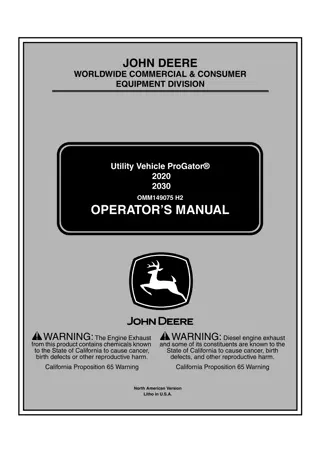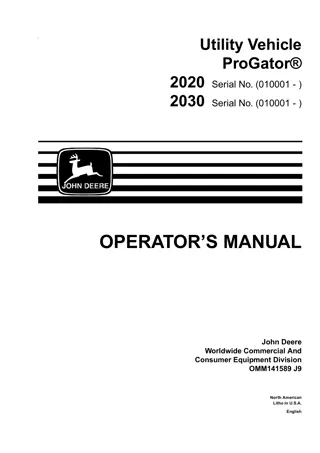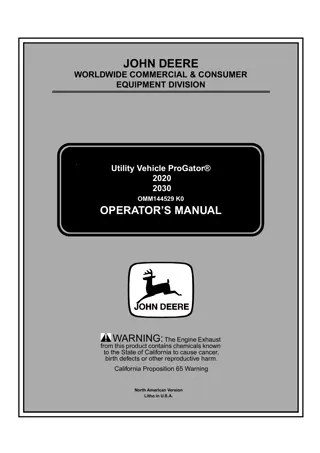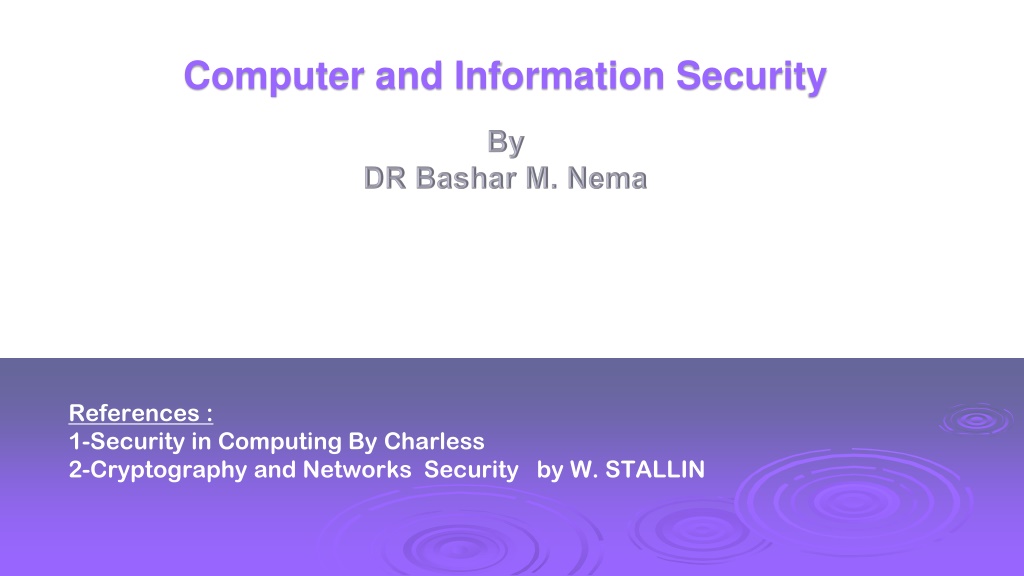
Computer and Information Security Fundamentals
Explore the essentials of computer and information security, covering risks, secure computing goals, system security threats, security goals, types of attacks, and more. Learn about the assets of computing systems, principles of penetration, and the CIA model for security goals.
Download Presentation

Please find below an Image/Link to download the presentation.
The content on the website is provided AS IS for your information and personal use only. It may not be sold, licensed, or shared on other websites without obtaining consent from the author. If you encounter any issues during the download, it is possible that the publisher has removed the file from their server.
You are allowed to download the files provided on this website for personal or commercial use, subject to the condition that they are used lawfully. All files are the property of their respective owners.
The content on the website is provided AS IS for your information and personal use only. It may not be sold, licensed, or shared on other websites without obtaining consent from the author.
E N D
Presentation Transcript
Computer and Information Security References : 1-Security in Computing By Charless 2-Cryptography and Networks Security by W. STALLIN
In This Chapter The risks involved in computing The goal of secure computing: confidentiality, integrity, availability The threats to security in computing: interception, interruption, modifications, fabrication Controls available to address these threats: encryption, programming controls, operating systems, network controls, administrative controls, laws and ethics 2
Definitions Computing system is a collection of five things : Hardware, Software, Storage media, Data, People/User The major Assets of computing system are Hardware ,Software, and Data. Principle of Easiest Penetration - An intruder must be expected to use any available means of penetration. Penetration may not necessarily be by the most obvious means, nor via the one we have the most defense against. Consider all the means of penetration Checked repeated times Don t underestimate the attacker/think like an attacker Strengthening one thin might weaken another 3
Type of System Security Threats in computing Interruption:-An asset of the system becomes lost or unavailable or unusable. Interception:- Unauthorized party has gained access to an asset . Modification:-An unauthorized party has not only accesses but tampers with an asset Fabrication:-An unauthorized party might fabricate counterfeit objects for a computing system. 4
Security Goals Secrecy (Confidentiality or Privacy)- assets accessed only by authorized parties Not only reading but viewing, printing or knowing about the asset Integrity assets modified only by authorized parties Includes writing, changing, changing the status, deleting or creating Availability assets are accessible to authorized parties at appropriate times. Denial of Service In terms called CIA 6
Types of Attacks(Vulnerabilities) Attacks on Hardware It is very visible Easy to attack Water, burned, frozen, gassed and electrocuted, dust, time, rodents, environment Attacks on Software Software Deletion Software Modification Software Theft Malicious Modification of Software Trojan Horse Virus Trapdoor Information leaks 7
Attacks on Data: Effects everyone Data is more than just an electronic file Principle of Adequate Protection Data Confidentiality Data Integrity Other Exposed Assets Networks Access Key People 8
Methods of Defense(Controls) Controls attempt to prevent the exploitation of a vulnerability Computer Security has lots of controls Simple or Difficulty Inexpensive or Expensive Types of Control Encryption formal name for the scrambling process deals with confidentially integrity Does not solve computer security problems. Plaintext (Cleartext) Ciphertext and 10
Physical Controls locks/security officer/backups Software Controls Programs must be secure to prevent attacks Program Controls: Internal Program Controls Operating System and Network System Controls Independent Control Programs (virus checker) Development Controls (quality standards in construction) Software controls effect the user Hardware Controls Smart cards, locks, devices to ID users, firewalls, intrusion detection systems, circuitry control Policies and Procedures Policies an agreement of way things are done Must be written and training provided 11
Effectiveness of Controls Controls must be properly used! Awareness of Problem Likelihood of Use Principles of Effectiveness - Control must be used-and used properly- to be effective. They must be efficient, easy to use, and appropriate. Overlapping Controls Periodic Review controls are not permanent 12
Chapter 2 Basic Encryption and Decryption 13
Terminology and Background Notations and Symbols: P: Plaintext, C: Ciphertext S: Sender R: Receiver T: Transmission medium O: outsider, interceptor, intruder, attacker, or, adversary S wants to send a message to R S entrusts the message to T who will deliver it to R Possible actions of O interrupt, intercept, modify, fabricate 14
Encryption and Decryption Encryption: a process of encoding a message so that its meaning is not obvious Decryption: the reverse process Encode(encipher) vs. decode(decipher) Encoding: the process of translating entire words or phrases to other words or phrases Enciphering: translating letters or symbols individually Encryption: the group term that covers both encoding and enciphering 15
Terminology Plaintext vs. Ciphertext P: Plaintext (P): the original form of a message ex. Computer , University, Home, Paper, C: Ciphertext(C) :the encrypted form ex. xuldf zjhgf . Basic operations plaintext to ciphertext: Encryption: C = E(P) ciphertext to plaintext: Decryption: P = D(C) 16
Encryption with key Encryption key: Ke Decryption key: Kd C = E(Ke, P) P = D(Kd, E(Ke, P)) .. P = D(Kd,C) Keyless Cipher is a cipher that does not require the use of a key. If the encryption algorithm fall into the interceptor s hands, future messages can still be kept secret because the interceptor will not know the key value 17
Symmetric Cryptosystem: KE=KD Asymmetric Cryptosystem: KE KD Cryptography cryptography means hidden writing, the practice of using encryption to conceal text Cryptanalysis cryptanalyst studies encryption and encrypted message, with the goal of finding the hidden meaning of the messages Cryptology includes both cryptography and cryptanalysis Cryptanalyst. 18
Cryptanalyst can do any or all of three different things: 1-attempt to break a single message 2-attempt to recognize patterns in encrypted messages, in order to be able to break subsequent ones by applying straightforward decryption algorithm 3-attempt to find general weakness in an encryption algorithm, without necessarily having intercepted any messages Breakable encryption An encryption algorithm may be breakable, meaning that given enough time and data, cryptanalyst could determine the algorithm (or the key) practicality. 19
Two forms of Encryption Substitution: One letter is exchanged for another. 1-Monoalphabetic Substitution Cipher 2-Polyalphabetic Substitution Cipher Transposition: The order of the letters is rearranged. 1-Columnar Transposition Cipher 2-Double Transposition Cipher 20
Monoalphabetic Ciphers(Substitution): Simple substitution use a correspondence table substitute each character by another character or symbol. The Caesar Cipher Named for Julious Caesar. Caesar used a shift of 3 translation chart. Plaintext A B C D E F G H I J K L M N O P Q R S T U V W X Y Z Ciphertext de f g h i j klmnop q r s t uvw x y z a bc TREATY IMPOSSIBLE wuhdwb lp s rvv leo h 0 1 2 3 4 5 6 7 8 9 10 11 12 13 14 15 16 17 18 19 20 21 22 23 24 25 ABCD EFGH I J K L M N O P Q R S T U V W X Y Z C= (P+3) Mod 26 Encryption P= (C-3) Mod 26 Decryption 21
Cryptanalysis of the Caesar cipher Ex. Decrypt the following ciphertext:- wklv phvvdjh lv qrw wrr kdug wr euhdn wrr= odd or see or too Network Security / G. Steffen 22
Advantages and Disadvantages of the Caesar Cipher Advantage :-Easy to use Disadvantage:- Simple structure and easy to break Other Monoalphabetic Substitutions Plaintext A B C D E F G H I J K L M N O P Q R S T U V W X Y Z Ciphertext k e y a b c d f g h i j l m n o p q r s t u v w x z Other Monoalphabetic Substitutions Plaintext A B C D E F G H I J K L M N O P Q R S T U V W X Y Z Ciphertext s d g j m p a v y b e h k n q t w z c f i l o r u x 23
Cryptanalysis of Monoalphabetic ciphers Frequency distributions Plaintext Frequency :- E T A, O, R, N , I .H , C , D , L, M . . X , J ,Z , Q 24
Sample Ciphertext hqfubswlrq lv d phdqv ri dwwdlqlqj vhfxuh frppxulfdwlrq ryhu lqvhfxuh fkdqqhov eb xvlqj hqfubswlrq zh glvjxlvh wkh phvvdjh vr wkdw hyhq li wkh wudqvplvvlrq lv glyhuwhg wkh phvvdjh zloo qrw eh uhyhdohg https://charactercounttool.com/ https://charactercounttool.com/ https://www.mtholyoke.edu/courses/quenell/s2003/ma139/js/count.html https://www.mtholyoke.edu/courses/quenell/s2003/ma139/js/count.html
Cryptanalysis of the message hqfubswlrq lv d phdqv ri dwwdlqlqj ENCRYPTIONIS A MEANS OF ATTAINING vhfxuh frppxqlfdwlrq ryhu lqvhfxuh SECURE COMMUNICATION OVER INSECURE fkdqqhov eb xvlqj hqfubswlrq zh glvjxlvh CHANNELS BY USING ENCRYPTION WE DISGUISE wkh phvvdjh vr wkdw hyhq li wkh THE MESSAGE SO THAT EVEN IF THE wudqvplvvlrq lv glyhuwhg wkh phvvdjh TRANSMISSION IS DIVERTED THE MESSAGE zloo qrw eh uhyhdohg WILL NOT BE REVEALED
Playfair Cipher The Playfair cipher was invented in 1854 by Charles Wheatstone, but named after lord Playfair who heavily promoted the use of the cipher. It is a polygraphic substitution cipher, which encrypts pair of letters instead of single letters. This makes frequency analysis much more difficult, since there are around 600 combinations instead of 26. A grid of 5x5 letters is used for encryption. Since there are only 25 spots, one character has to be omitted (for instance J, which is replaced by I). The grid is formed by first taking a code word (with duplicate letters removed) and then adding any alphabet characters missing. 1) 2) 3) 4) 5) 6)
Playfair Key Matrix A 5X5 matrix of letters based on a keyword Fill in letters of keyword (sans duplicates) Fill rest of matrix with other letters eg. using the keyword MONARCHY M O N A R C H Y B D E F G I/J K L P Q S T U V W X Z http://www.online.crypto-it.net/eng/playfair.html http://www.online.crypto-it.net/eng/playfair.html
Encrypting and Decrypting plaintext is encrypted two letters at a time If a pair is a repeated letter, insert filler like 'X If both letters fall in the same row, replace each with letter to right (wrapping back to start from end) If both letters fall in the same column, replace each with the letter below it (again wrapping to top from bottom) Otherwise each letter is replaced by the letter in the same row and in the column of the other letter of the pair. The table used for encryption and decryption, created based on the provided password. The following assumptions were made: if two letters are in the same row, the letters to the right (during encryption) or to the left (during decryption) would be taken to replace them. if two letters are in the same column, the letters below them (during encryption) or above them (during decryption) would be taken to replace them.
Playfair Example Use the following table: C H A E S B G I/J K O P Q V W X Playfair Example Break the plaintext in a two character diagram: Plaintext is divided into 2-letter diagram Use X to separate double letter Use X to pad the last single letter R D M T Y L F N U Z TH ES CH EM ER EA LL YW OR KS TH ES CH EM ER EA LX LY WO RK SX Encrypting the message :- : THE SCHEME REALLY WORKS
Cont. Playfair Example TH -> RP ES -> SB CH -> HA EM -> GD ER -> DC EA -> BC LX -> AZ LY -> RZ WO -> PV RK -> AM SX -> WB C E G O V H S I/J P W A B K Q X R D M T Y L F N U Z Enc Dec
Cont. Playfair Example Thus the message: " THE SCHEME REALLY WORKS Becomes RP SB HA GD DC BC AZ RZ PV AM WB rpsbh agddc bcazr zpvam wb H/W:: Write C# program to encrypt ZOOM TEST using Playfair. You can use the following Link to programming (Online). https://rextester.com/
Security of Playfair Cipher security much improved over monoalphabetic since have 26 x 26 = 676 digrams would need a 676 entry frequency table to analyse (verses 26 for a monoalphabetic) and correspondingly more ciphertext was widely used for many years eg. by US & British military in WW1 it can be broken, given a few hundred letters since still has much of plaintext structure
Hill Cipher The Hill Cipher uses matrix multiplication to encrypt a message. First, you need to assign two numbers to each letter in the alphabet and also assign numbers to space, . , and ? or !. The key space is the set of all invertible matrices over Z26. 26 was chosen because there are 26 characters, which solves some problems later on.
Hill Cipher example Encryption:- C= K*P Mod 26 -1 Decryption:- P= K *C A B C D E F G H I J K L M N O P Q R S 1 2 3 4 5 6 7 8 9 10 11 12 13 14 15 16 17 18 19 T U V W X Y Z 20 21 22 23 24 25 26 Consider the following message: Herbert Yardley wrote The American Black Chamber
Hill Cipher example Break the message into: he rb er ty ar dl ey wr ot et he am er ic an bl ac kc ha mb er Now convert letters into number-pair: 8 5 18 2 5 18 20 25 1 18 4 12 5 25 23 18 15 20 5 20 8 5 1 13 5 18 9 3 1 14 2 12 1 3 11 3 8 1 13 2 5 18 03 07 = K Now using the matrix (key) 05 12
Hill Cipher example Make the first pair a column vector (h (8) e (5)), and multiply that matrix by the key. 3 5 12 7 8 5 59 100 = Of course, we need our result to be mod 26 59 100 7 22 mod26 The ciphertext is G (7) V (22).
Hill Cipher example For the next pair r (18) b (2), 3 5 12 7 18 2 16 10 mod26 and 16 corresponds to P and 10 corresponds to J. Do this for every pair and obtain GVPJKGAJYMRHHMMSCCYEGVPEKGVCWQLXXOBMEZAKKG https://www.dcode.fr/hill-cipher https://www.dcode.fr/hill-cipher
Polyalphabetic Substitution Cipher Vignere Cipher is a collection of 26 permutations. Usually these permutations are written as 26*26 matrix with all 26 letters in each row and each column . PLAINTEXT A B C D E F G H I J K L M N O P Q R S T U V W X Y Z KA a b c d e f g h i j k l m n o p q r s t u v w x y z E B b c d e f g h i j k l m n o p q r s t u v w x y z a Y C c d e f g h i j k l m n o p q r s t u v w x y z a b . D d e f g h i j k lm n o p q r s t u v w x y z a b c . . .. . CIPHERTEXT ...... Z z a b c d e f g h i j k l m n o p q r s t u v w x y z https://www.dcode.fr/vigenere-cipher https://www.dcode.fr/vigenere-cipher If Pt= BAD & Key =ABD Then Ct = bbg 41
Example: To Encrypt DCODE, the key is KEY. Locate the first letter of the plaintext message in the first line of the table and the first letter of the key on the left column. The cipher letter is at the intersection. Example: Locate the letter D on the first row, and the letter K on the first column, the ciphered letter is the intersection cell N. Continue with the next letter of the plaintext, and the next letter of the key. When arrived at the end of the key, go back to the first letter of the key. Result: NGMNI is the ciphertext of Plain=DCODE. https://dotnetfiddle.net/uPHxwr https://dotnetfiddle.net/uPHxwr Example: To decrypt NGMNI, the key is KEY. Locates the first letter of the key in the left column, and locates on the row the first letter of the ciphered message. Then go up in the column to read the first letter, it is the corresponding plain letter. Example: Locate the letter K on the first column, and on the row of it, find the cell of the letter N, the name of its column is D, it is the first letter of the plain message. Continue with the next letters of the message and the next letters of the key, when arrived at the end of the key, go back the first key of the key. Result: The original plain text is DCODE. 43
Cryptanalysis of polyalphabetic Substitutions Kasiski method for repeated patterns. 1- identify repeated pattern of three or more characters 2- for each pattern write down the position at which each instance of the pattern begin 3-compute the difference between the starting points of successive instances 4- determine all factors of each difference 5- if a polyalphabetic cipher was used, the key length will be one of the factors that appears often in step 4 44
Example xughr trtei mngfh ggfkl rtrah ggfui fbdnc kmlph ggfty nbvcf 1525-15=10 1,2,5,10 25 40-25=15 1,3,5,15 40 40-15=25 1,5,25 Key length= 5 45
example xulgh xcopr zsesd wwert fghty ttyui rtrty Jbfgh xdcfv ltfgy sdfew hygth oilji cvbnl tyree bcgfv hgtfg htdju fhrye jghhk ydftf ghtgt 20 (83-20)=63 1,3 ,7,9,21,63 83 (104-20)=84 1,2,3,4,6,7,12,14,21,42,84 104 (104-83)=21 1, 3,7,21 Is Key length 3 or 7 or 21 ? 46
Calculating the IC The formula used to calculate IC (Index of Coincidence): (fi * (fi-1)) N(N-1) where 0 > i > 25, fi is the frequency of the ith letter of the alphabet in the sample, and N is the number of letters in the sample
Example The IC of the text THE INDEX OF COINCIDENCE would be given by: c(3*2)+ d(2*1)+ e(4*3)+ f(1*0)+ h(1*0)+ i(3*2)+ n(3*2)+ o(2*1)+ t(1*0)+ x(1*0) = 34 divided by N*(N-1) = 21*20 = 420 which gives us an IC of 34/420 = 0.0809 The IC of the text BMQVSZFPJTCSSWGWVJLIO would be given by: b(1*0)+ c(1*0)+ f(1*0)+ g(1*0)+ i(1*0)+ j(2*1)+ l(1*0)+ m(1*0)+ o(1*0) + p(1*0)+ q(1*0)+ s(3*2)+ t(1*0)+ v(2*1)+ w(2*1)+ z(1*0) = 12 divided by N*(N-1) = 21*20 = 420 which gives us an IC of 12/420 = 0.0286
How is this helpful? IC can be used to test if text is plain text or cipher text. Text encrypted with a substitution cipher would have an IC closer to 0.0385, since the frequencies would be closer to random. English plaintext would have an IC closer to 0.0667. This measure allows computers to score possible decryptions effectively.

